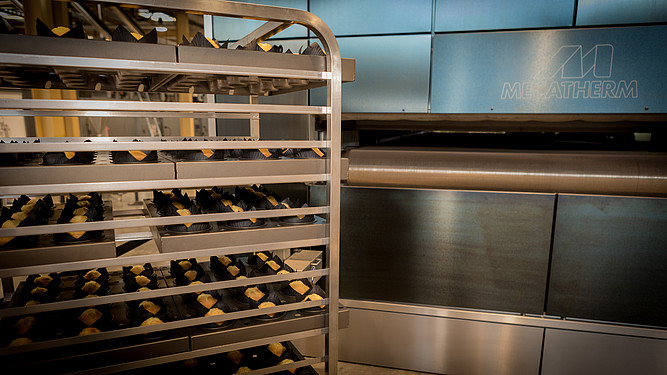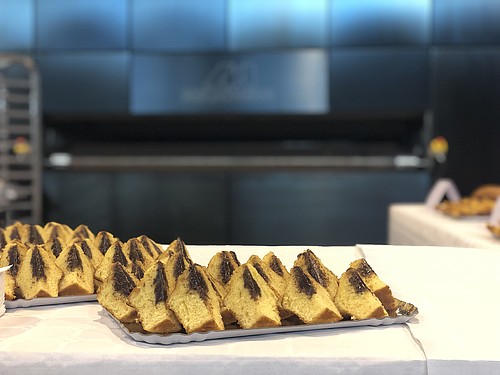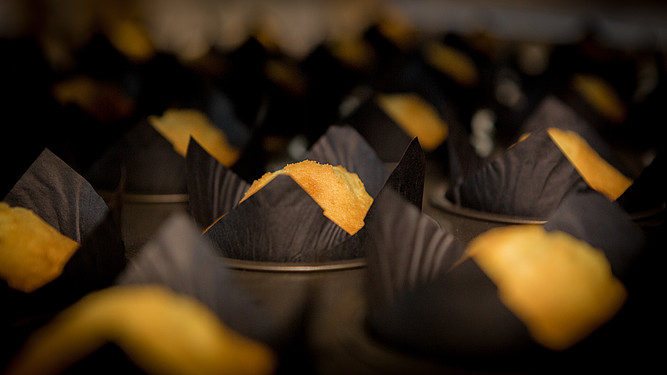The 3 commandments of baking industrial patisserie products
The baking phase has always been a key stage in the production of patisserie products. Ever more innovative and efficient, baking technologies have developed over the centuries to ensure products' quality and uniformity. Golden tart shells, moist or fluffy sponges, the baking phase gives the final product the main taste, appearance and texture characteristics that consumers are looking for. In an industrial context there are also the questions of uniformity and performance optimisation.
Let's take a closer look at the challenges involved in baking on an industrial scale.
You shall produce a perfect patisserie product!
The baking stage comprises a complex series of simultaneous physical, chemical and biochemical transformations: expansion of the product, evaporation of water, formation of a honeycomb structure and a crust, colouration, etc.[1] For Loïc Le Denmat, patisserie chef at Mecatherm, "High precision baking is essential to guarantee the optimisation of the product's textures, taste, appearance and shelf life."
Some products, such as lava cake, make the baking phase even more tricky. Firm on the outside with a creamy heart, this particularly complex product requires extremely precise baking. The industrial bakers who attended the lava cake demonstration during the last Mecatherm seminar were impressed: "It was perfect."; "I'm amazed by such high quality."; "I didn't think it was possible to achieve such a good result in industrial ovens."
The secret to perfection?A baking tool able to ensure high precision, from the product expansion phase, to its colouration. To do this, different variables need to be controlled such as the heating mode, temperature, humidity and air speed.
You shall be flexible!
Guaranteeing a perfect finished product is a prerequisite in industrial baking. However, it is now essential to be able to achieve this across a wide range of products in order to meet consumers' ever diverse expectations.
Every patisserie product has its own characteristics, recipe and specific baking requirements. A modular oven with different configurable heating zones offers greater flexibility for managing the baking curves. A dream playground for all industrial bakers seeking to make unique patisserie products which will stand out on the market.
You shall maintain regularity!
Regularity is a major objective for all industrial production. Automation helps to reduce "human" error and thereby optimise homogeneous production. However, industrial ovens have a vast baking surface area. The challenge is therefore to obtain a uniform appearance for all products at the end of the baking process, wherever they are placed in the oven.
Air flows must be carefully controlled. "Homogeneous hot air circulation within the oven's different zones is crucial for obtaining regular products," confirms Marie Laisne, oven product manager at Mecatherm. Indeed, any draughts generated inside the baking chamber can result in uneven baking of the products. The very design of the oven plays an important role in ensuring the regularity of the patisserie products as they come out of the oven.
The trend for mini formats accentuates this point. Indeed, due to their size, small products are even more susceptible to the effects of a draught.
The baking of industrial patisserie products is an exact science, based on numerous parameters. Precision, dosing of the intensity and regularity: the bigger the production capacity, the greater the challenges. To optimise industrial performance and ensure high quality baking, the baking solution must be able to adapt to all the products' specificities.
Discover the M-TA oven, designed to meet all the challenges of industrial patisserie production.
Learn more about Mecapatisserie Line
In the next instalment of the series, we will analyse how the preparation phase prior to baking plays a key role in the texture of the finished product.



